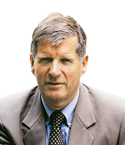Oil and Gas in the Capitals
The second week of March saw two important petroleum events occur in Norway. On March 13, the Ministry of Petroleum and Energy invited comments on its proposal for the 24th licensing round. Then, on March 17, Statoil presented its 2016 Annual Report.
Next licensing round. The ministry proposes to allocate 111 blocks during fourth-quarter 2017: nine in the Norwegian Sea and 102 in the Barents Sea. The numbered licensing rounds target the least-known parts of the Norwegian Continental Shelf (NCS), but they feature a high probability of making new, large discoveries. Exploring these areas is essential for maintaining consistent activity in the Norwegian industry. These licensing rounds promote gradual, step-wise exploration that harvests more information about the geologically least-known parts of the potential resource base.
The choice of blocks for these rounds is based on oil company nominations. In this case, the process began in August 2016, with the ministry inviting license-holders and other prequalified companies to nominate blocks for the 24th round. In late November 2016, the ministry received nominations from 22 companies. Subsequently, the ministry proposal shows a heavy preference for the Barents Sea, especially the northern portion.
In Norway, this choice is politically controversial. Despite a basic agreement that petroleum activities shall not transgress the ice line, i.e. enter the area covered by ice, there is disagreement on where, exactly, that line runs. The government, apparently thinking that global warming is active, defines it as fairly far north. The environmentalist lobbies, which believe in global warming, want to define it farther south. No allocation will be made until after the September 2017 national elections, whose outcome is uncertain.
Statoil’s lagging performance. Meanwhile, Statoil’s annual report for 2016 shows a net $2.9-billion operating loss, improved from a $5.17-billion loss in 2015. Net interest-bearing debt, before adjust-ments, rose to $18.4 billion, up from $13.9 billion in 2015. Net debt to capital employed, ratio-adjusted, was 35.6% in 2016, up from 26.8% in 2015. The annual reserve replacement ratio was 0.93, up from 0.70 in 2015. The average lifting cost per barrel was $5, down from $5.90 in 2015.
Results from 2016 confirm the trend from preceding years—Statoil makes money in Norway, but runs losses abroad, especially in North America. Since privatization and listing on stock exchanges in 2001, Statoil has expanded internationally. In 2001, Statoil’s upstream investment in Norway was about twice as large as outside the country. By 2004, upstream investment abroad had passed the volume in Norway. From 2001 through 2015, Statoil invested more outside than in Norway, largely by acquisitions. The largest acquisitions were during 2011 in U.S. shale plays, evidently assuming that oil prices would remain high.
Results in no way match the investment profile. In this capital-intensive industry with long lead times, it would be unreasonable to compare investment and results year-by-year; but over a period of 10 to 15 years, patterns emerge.
For the company’s management, operating income after tax is the key figure, determining cash flow available. In Statoil’s case, operating income before tax is of evident interest to the Norwegian government and citizens, as the company pays 78% income tax on activities in Norway, in addition to receiving 70% of dividends.
From 2001 to 2016, Statoil invested NOK 534 billion, or $63 billion at the current exchange rate of 8.47, in upstream activities in Norway, with a cumulative result before tax of $176 billion. During the same period, Statoil invested NOK 635 billion in E&P activities outside Norway, with a cumulative result before tax of $2 billion, after heavy losses in 2014, 2015 and 2016.
Cumulative result for the years 2001 to 2016 after tax was $51 billion for E&P in Norway. On upstream activities outside Norway, over the same period, the cumulative result was negative, a loss of $8 billion. For Statoil’s total upstream activities, investment over the 2001–2016 period was $125 billion. Total operating result before tax was $179 billion. After tax, it was $43 billion.
Evaluating the difference. Statoil’s upstream activities on the NCS have never shown a loss since 2001. Yet, results show that the international activities, overall, have not been good business for Statoil. There are, however, big differences. Statoil’s major losses have been in North America, more specifically in Canadian tar sands, the Gulf of Mexico and U.S. shale plays. In other parts of the world, Statoil has been more successful, e.g. in Angola, where the company got a deal together with BP, before it was privatized.
Operators will take risks, go international and lose money when oil prices collapse. Statoil, however, may have gone too far. The strategy since privatization has been to expand internationally and boost the stock price, if necessary, by borrowing to pay dividends. This is not sustainable. Compared to other companies, Statoil has a cost burden, and a debt burden, meaning exposure to oil price risk, as well as financial market and interest rate risk.
From a Norwegian perspective, Statoil’s privatization no longer appears a success. Although Statoil’s income before tax is sheltered and cannot be transferred abroad, the company evidently has used some of its cash flow, after tax, to invest in doubtful ventures in foreign lands.
Results indicate that Statoil’s Stavanger-based managers of Norwegian operations are more competent than the highly paid London-based leaders of Statoil’s strategy development and international operations, and their consultants. The announced departure of strategy director John Knight is good news. ![]()

- Applying ultra-deep LWD resistivity technology successfully in a SAGD operation (May 2019)
- Adoption of wireless intelligent completions advances (May 2019)
- Majors double down as takeaway crunch eases (April 2019)
- What’s new in well logging and formation evaluation (April 2019)
- Qualification of a 20,000-psi subsea BOP: A collaborative approach (February 2019)
- ConocoPhillips’ Greg Leveille sees rapid trajectory of technical advancement continuing (February 2019)


